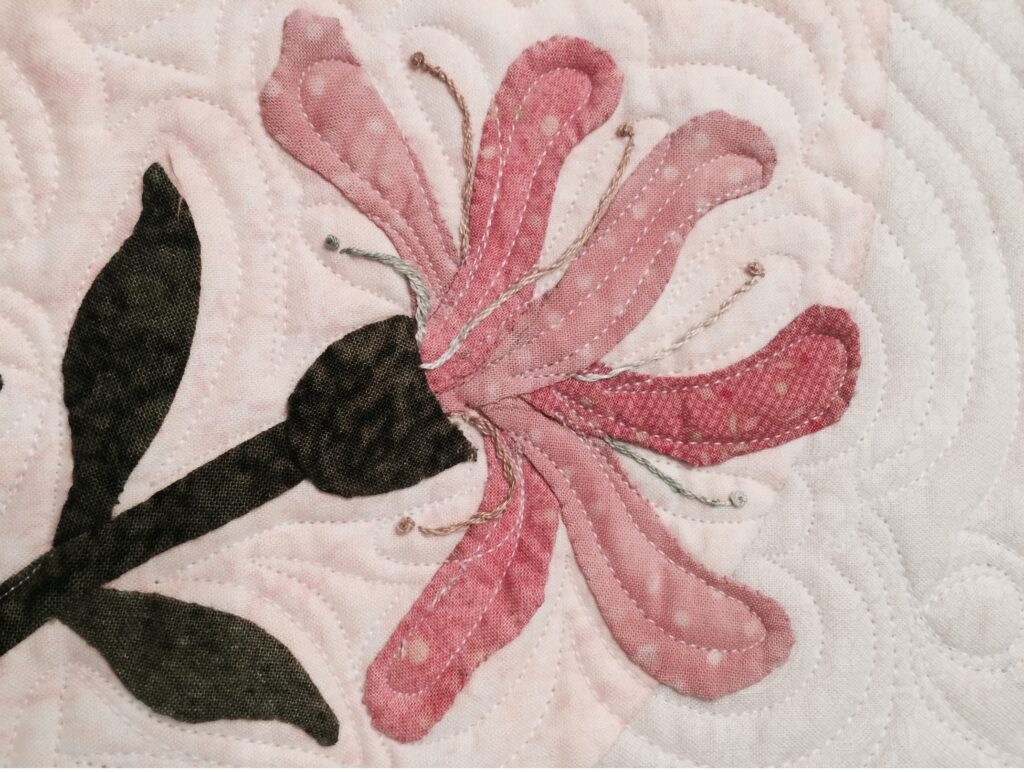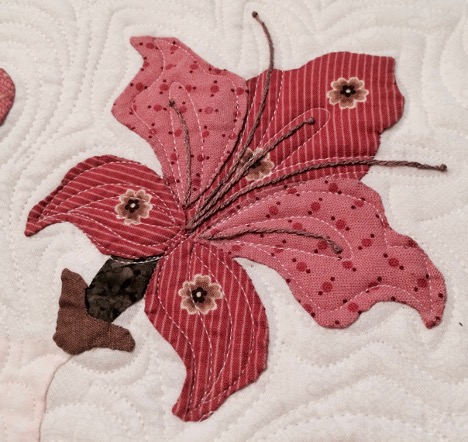Balancing Act
We hear about balance all the time. Fitness experts tell us to have a healthy life we should exercise and eat a balanced diet. Time management experts encourage us to balance our lifestyle between family, work, and play. Financial experts advise us to keep a balanced budget and balance our retirement accounts between stocks, savings, and insurance. I could go on and on, but you get the point that balance seems to work in every area of our life. Quilting is no exception.
There are numerous definitions for the word balance in the dictionary. Several of them deal with weights and masses. A few dealt with clock and watch parts. Others deal with accounting methods. But the one we as quilters should the most interested in is this – “balance is any condition of equilibrium: a sense of proportion and poise: to render equal in proportion.”
Over the years, quilters have been taught to have a balance in our color schemes. Light, medium, and dark – overuse of one and your quilt will appear to be out of balance. Using the same size seam allowance, squaring up blocks, adding accurately cut borders – this is how we achieve balance in our piecing. But how do we achieve that same sense of proportion and poise when we are quilting the quilt?
My first consideration before quilting is to choose a quilting design that is compatible with the style of the quilt. I also use the fabrics of my quilt for inspiration. Hand or machine quilting designs should work together to give the quilt a balanced look in both overall design and density. Ask yourself, “Does the quilting design fill the space? Will the quilting be evenly distributed over the surface of the quilt?”. An even distribution of the quilting and the recurrence of design will make your quilt visually pleasing.
My second consideration is the choice of batting. Batting manufacturers’ give quilting guidelines on packaging for how closely the batting should be quilted for the best overall outcome. These guidelines have a range from 2” apart up to 10” apart. Coordinate these ranges with the design you have chosen. My personal choice is to use a good 100% cotton batting or an 80/20 cotton /polyester blend for machine quilting. The cotton fibers in these battings give the thread something to lock into for a beautiful stitch. These battings can be quilted closely or farther apart depending on your desired look.
That brings us back to that word balance – a sense of proportion. The proportion of the quilting in the body of the quilt is related to the proportion of the quilting in the borders. When the body of the quilt is more densely quilted than the borders, the borders become wavey. An area of the body of the quilt that is more densely quilted than all the others will draw up and cause puckering. Any area left completely unquilted will puff up. These same problems can occur when quilting with and overall design like stippling or meanding. Remember to keep the density between these shapes consistent over the entire surface of the quilt.
Machine quilting, like so many other things, all comes down to personal taste. There are thousands of design choices for finishing your quilt. Can’t find one you like? Then create your own!
Whither you like very dense quilting or just something simple, remember to keep it in balance. I would enjoy seeing what you are stitching on today. Send me an email or leave a comment below.



